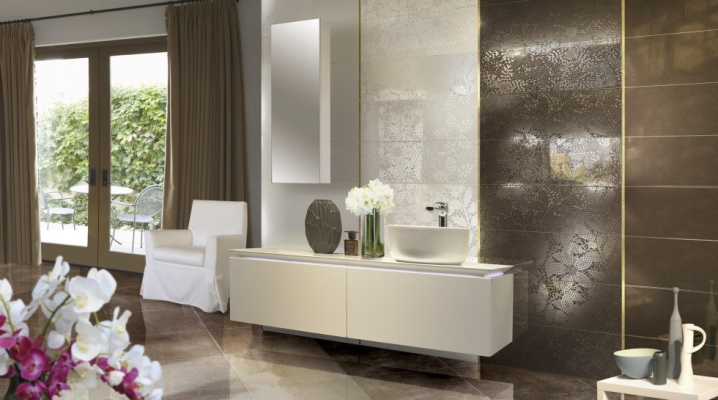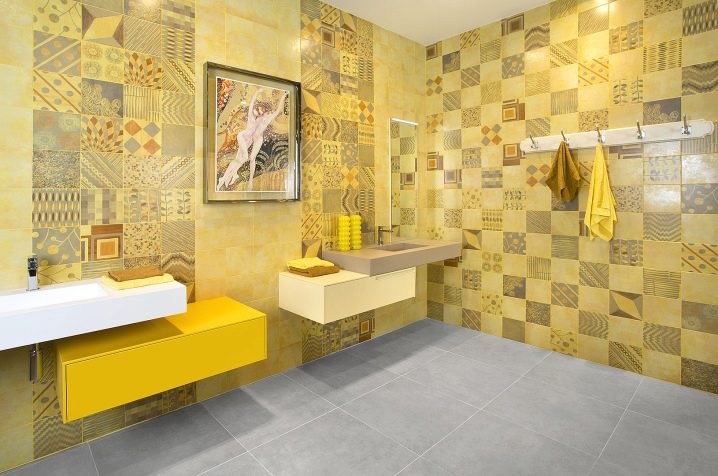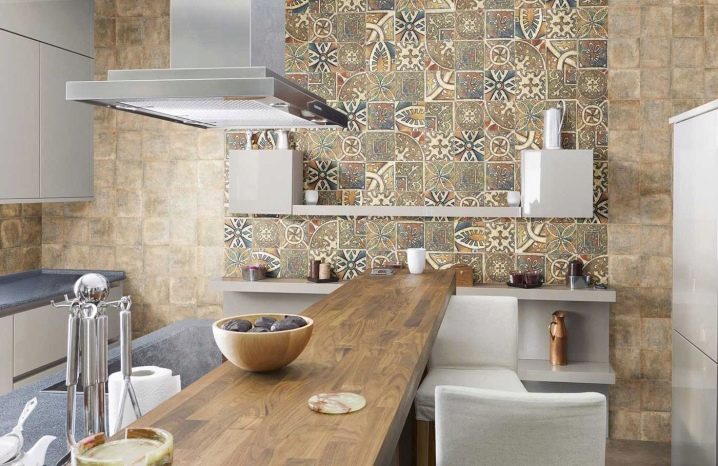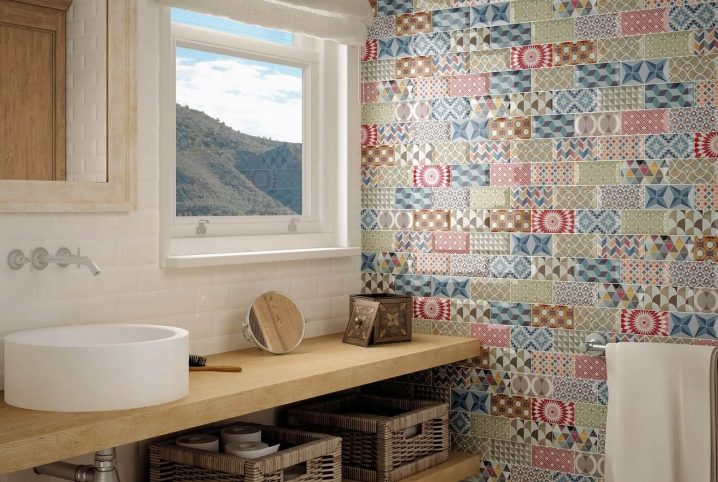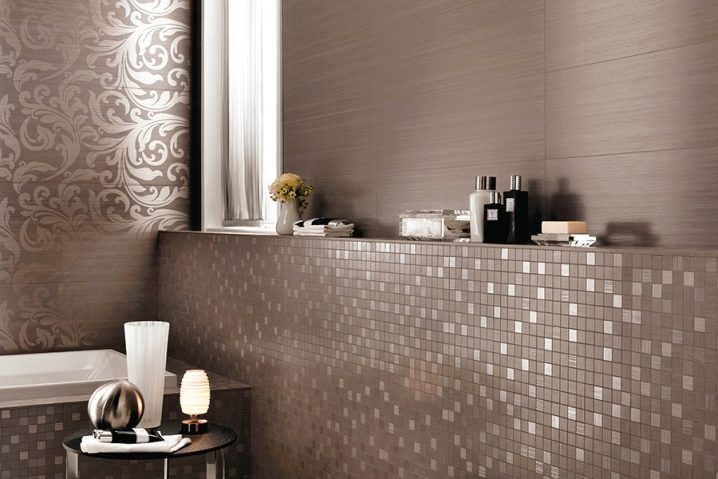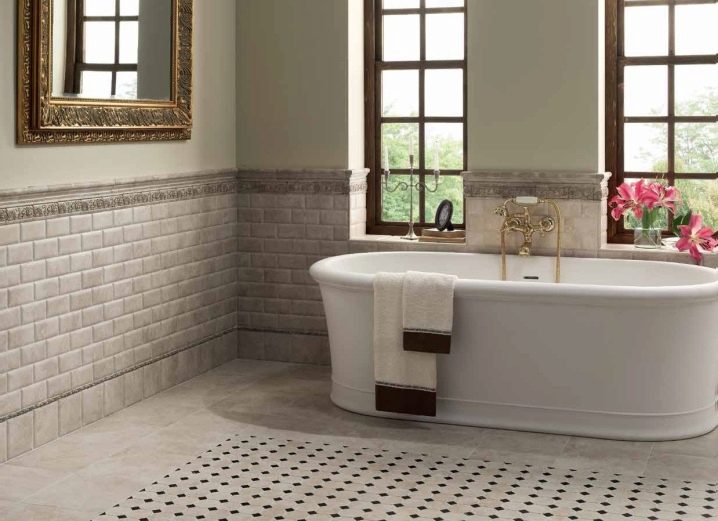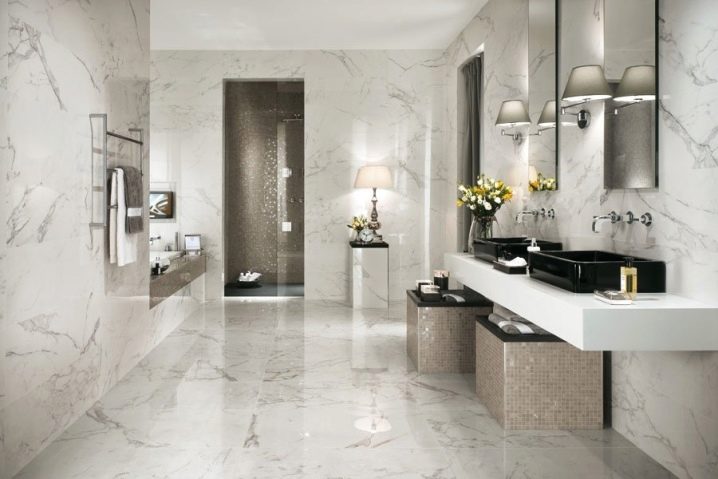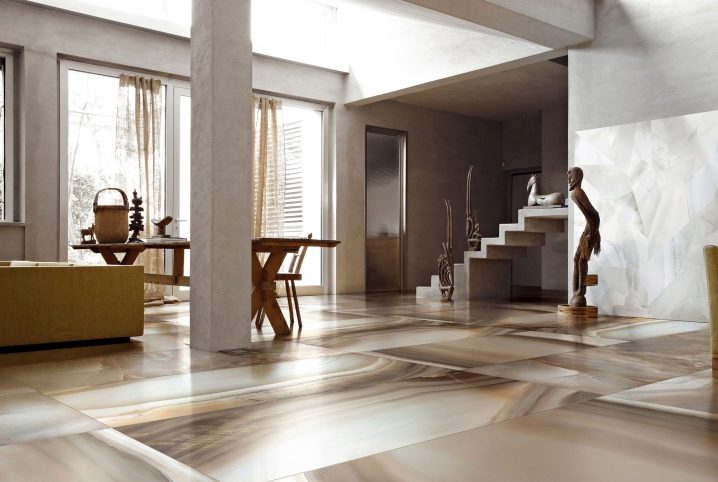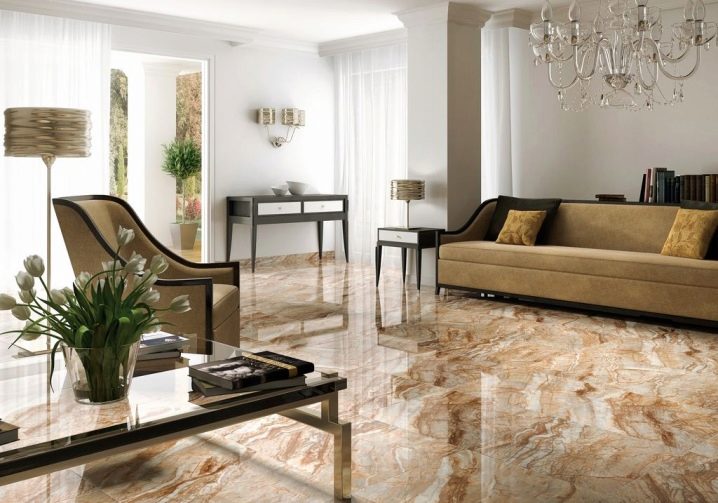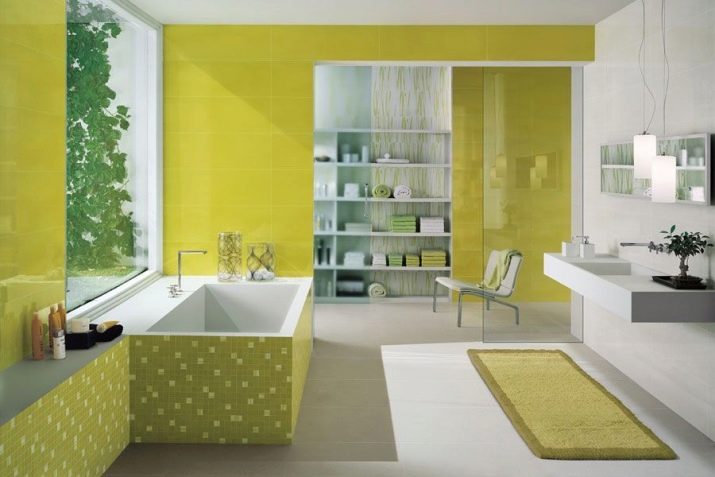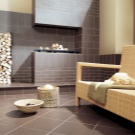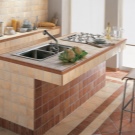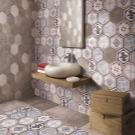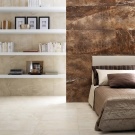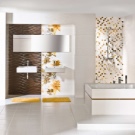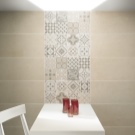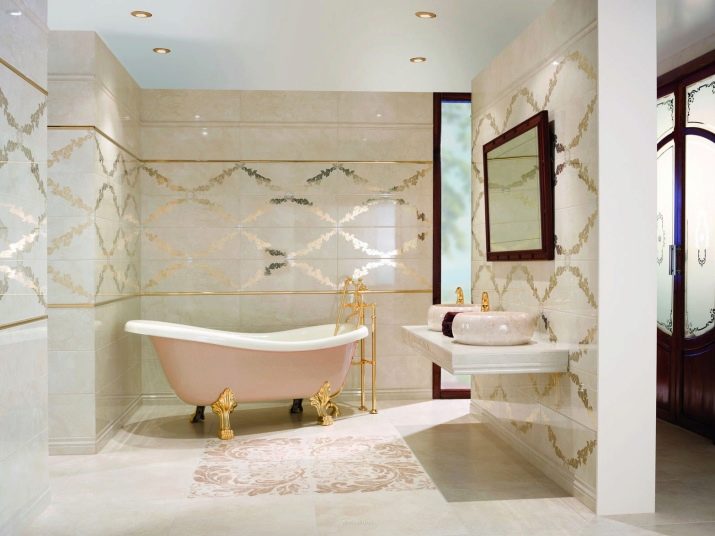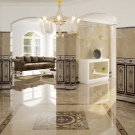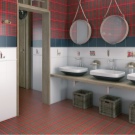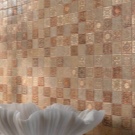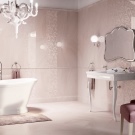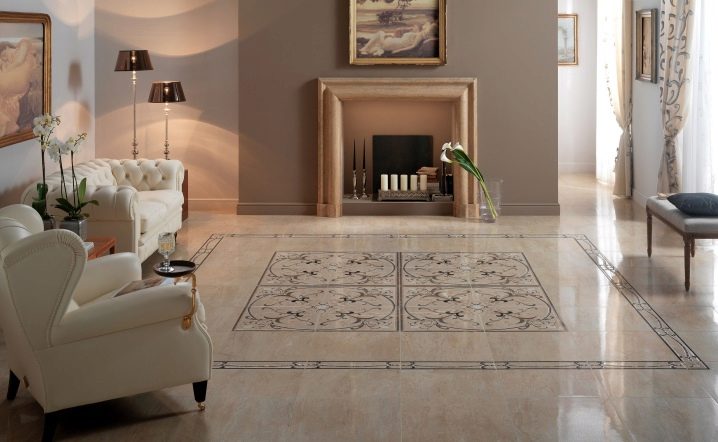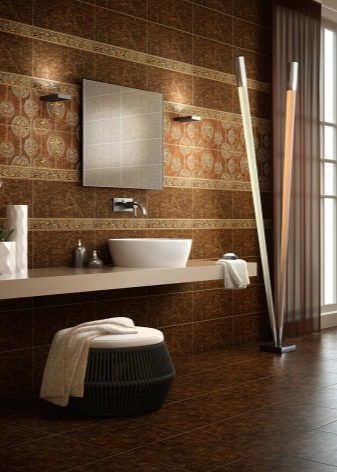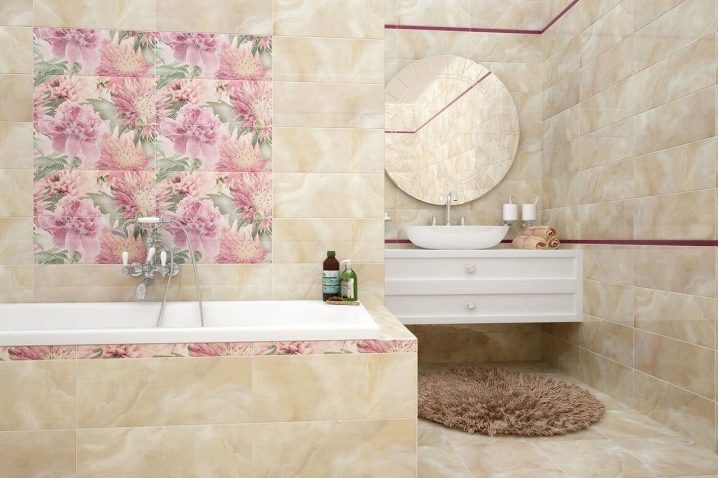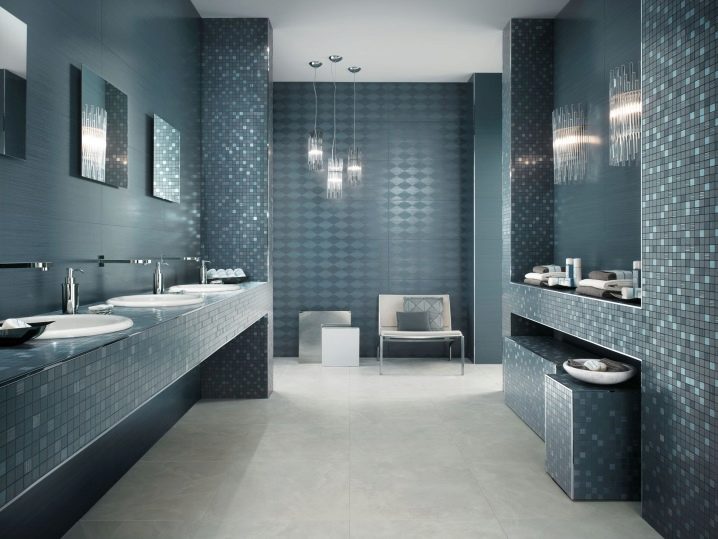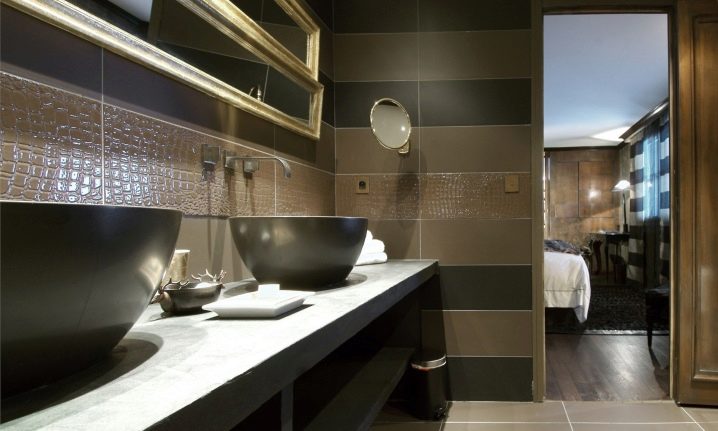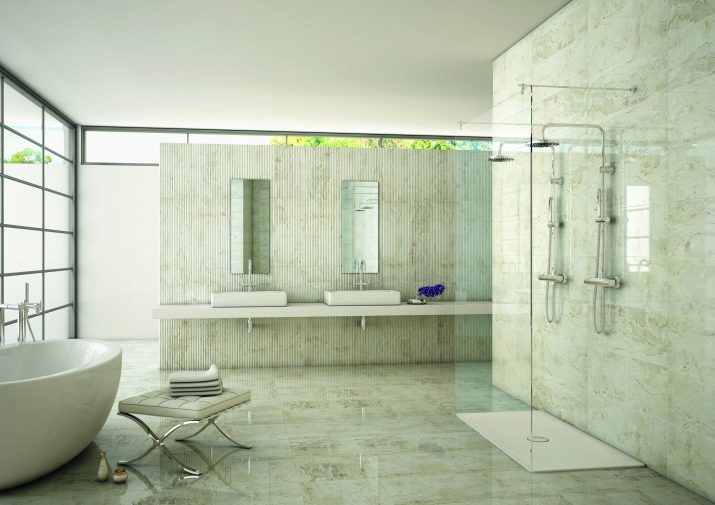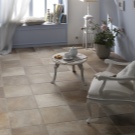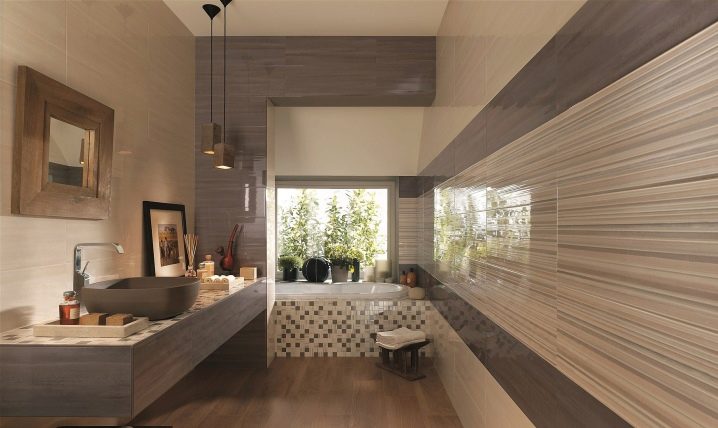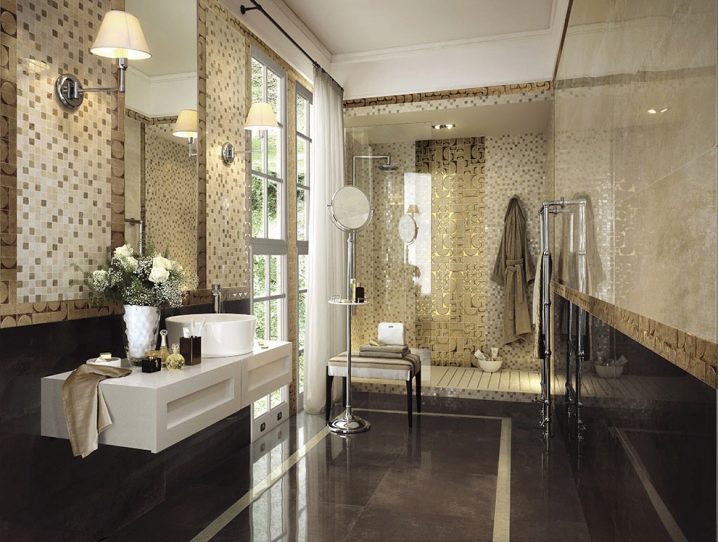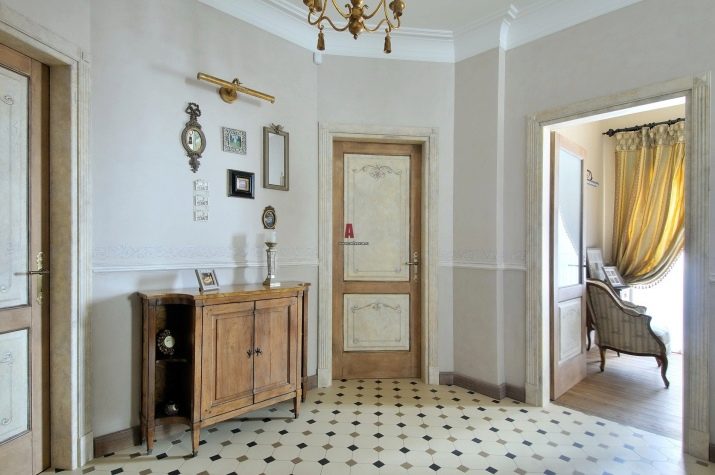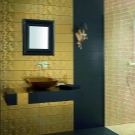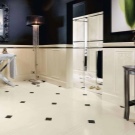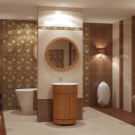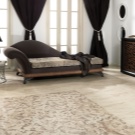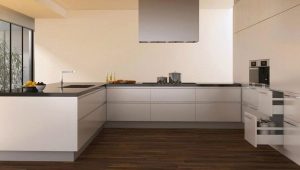What tile to choose for the floor
Ceramic tiles are plates of baked clay that are laid on the floor or walls in order to improve their performance. Ceramic tiles come in various shapes and sizes: from a standard square to complex mosaic shapes.
Depending on the location of the tile it is divided into floor, wall, decorative, paving.
Floor tile is the most common choice as flooring for rooms with high traffic, high levels of moisture and pollution: in the kitchen, in the hallway, bathroom and toilet. It differs from that which is laid on the walls by a high level of strength and resistance to shock loads.
Tile class
The tile class is denoted either by the Roman numerals PEI I (II, III, VI, V) or Arabic 1 - 5.
The first class tile is designed for rooms with low traffic, the movement in which is carried out without shoes or in soft shoes - bathroom, bedroom.
Tile second class for laying in the living rooms of country houses, in those places where the movement is carried out in slippers.
The third-class tile is laid on the floor in places of medium intensity movement in ordinary shoes (small offices, rooms in hotels, living quarters in an apartment, including a hall), but excluding high-traffic areas - corridors, lobbies, and stairs.
The fourth class of tile has the characteristics of wear resistance, it is resistant to abrasion and it is used not only in kitchens, corridors of residential premises, but also in shops, restaurants and halls for registration.
The fifth class of tiles is the most durable, it is laid in the halls of airports, train stations, subway stations. This class is mainly used for public spaces.
Thus, you can safely take 3-4 class tiles to the apartment. If you cannot find the class marking on the package, and the seller cannot help you, try to determine the class by weight: the heavier the tiles, the stronger and more durable the surface.
Security
A tile on the floor carries a certain percentage of health risk - in the wet state its surface becomes slippery.To determine the degree of safety also has its own designations that indicate the coefficient of friction. The higher it is, the safer the tile. The most dangerous one where the coefficient does not reach the value of 0.19. Tile, providing relative safety, has a marking 0,39-0,75. The safest with a value of 0.75 and higher.
The glossy surface of the tile significantly reduces the safety value. In the working area in the kitchen (next to the stove and sink), in the bathroom is best laid rough tile. High-quality matte and rough tile is easy to wash off dirt and grease and, contrary to the delusion of many, does not clog in the pores, even if it has a wood texture.
Kinds
Porcelain tile - floor tiles based on kaolin, quartz sand and feldspar. It is made by pressing at a temperature of 1300 degrees. The structure is homogeneous, which allows it to be used for laying on the floor in high-traffic areas. In addition, this material is resistant to UV light and does not change color over the entire life cycle, therefore, it can be laid not only in the kitchen, but also on the floor of an open veranda.It is frost-resistant, therefore it is an excellent choice for summer houses without a heating system. In addition, porcelain tile does not attract dust.
The following signs are on the package with ceramic granite tiles:
- Foot on a dark background - floor tile
- The image of the foot on the shaded background - increased wear resistance
- Snowflake - frost resistance.
When choosing a polished porcelain tile, remember that it is very slippery and, despite its strength, may lose shine over time if you walk on it in street shoes.
Tile on a porous basis. This type of tile is not suitable for the bathroom and kitchen. During production, it is fired once, due to which it has too porous structure. The more pores, the better the tile absorbs moisture. It can only be laid on the floor in residential premises.
Majolica - double-fired tile, which includes the clay from the quarry, carbonate, sand and iron oxide. The difference of this tile from others is the wear-resistant pattern, which is applied not to the top layer, but to the entire depth of the tile square. In addition, the tile is perfectly resistant to acids.Usually used as a decorative element, as very expensive.
Mosaic tiles are the easiest to install. It consists of small parts that are glued to a grid or paper. For laying it is enough to prepare the base, cut the desired shape of the tile and stick it on the tile adhesive.
Tuscan cotto tiles are used exclusively for design, not design solutions. It is made by extrusion from clay, is not enameled, has a small thickness (not more than 3 mm) and a very porous structure. As a result, porosity does not tolerate moisture and places of high pollution. But the tile cottaforte - suitable for the floor to a greater extent. It is already covered with glaze and has all the necessary properties of the floor covering for the kitchen.
Gres Gres is a porcelain stoneware with mica added to it. It has a maximum strength close to natural granite.
Natural stone - not very comfortable flooring for the kitchen. It is expensive, difficult to handle and style, and most importantly, ground stone is very slippery, especially marble. Therefore, if you really do marble floor, then in the kitchen, where the owners practically do not cook.
Size and color
Designers have long come to the conclusion that in small rooms it is better to put floor tiles of small size. Large slabs of porcelain stoneware look in a small kitchen advantageously only when they have a natural stone pattern or similar to it, smoothing the seams between the slabs. In other words, when the effect of a monolithic floor is created.
More fractional drawing in a small kitchen does not eat up space and gives the floor an elegant look.
Before buying a batch of tiles, check that the actual size corresponds to that stated on the package. It is not necessary to measure each tile, it is enough to measure one from each package. It happens that the tiles differ by a couple of millimeters, this leads to difficulties when joining and forming a smooth coating.
As for color, the best option for achieving optical harmony of space is the color of the tile that is lighter than the overall interior by a couple of tones. The darker the tile, the more it attracts the eye and the more dust and scratches are visible on it. The lighter the tile, the more visible the spots and sand on it.
If you plan to lay tiles in a diagonal or chess way, then know, depending on the direction of laying,visually it will narrow or expand the space. It is also important to know that the dark grout between the seams broadens the perception of the floor. Grout to match the tile smooths the surface, making it homogeneous. However, the light grout will still become dark during operation. It can be returned to its original purity with the help of a steam generator.
